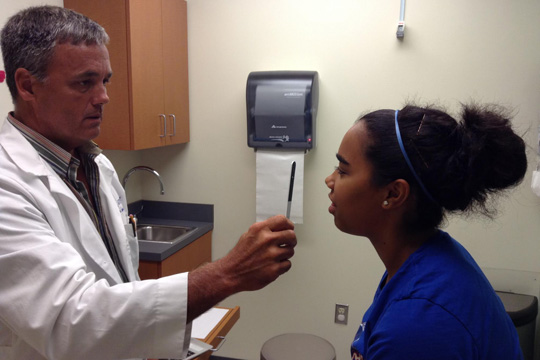Jan 10, 2017How Does That Sound?

A new concussion diagnosis tool may help curb guessing. By using an auditory stimulus, a recently published study’s mechanism for diagnosing concussion may help make the process more objective.
“Making sense of sound requires the brain to perform some of the most computationally complex jobs it is capable of, which is why it is not surprising that a blow to the head would disrupt this delicate machinery,” Nina Kraus, PhD, lead author of the study, Hugh Knowles Professor in the Northwestern University School of Communication, and director of the school’s Auditory Neuroscience Laboratory, told Northwestern Now.
Published in Scientific Reports, the study was performed with 40 children who were being treated for concussion, along with a control group. The researchers used three simple sensors, which were placed on the participants’ heads to measure the frequency following the brain’s reaction to sound.
The participants who had suffered concussion had an average of 35 percent smaller neural response to pitch. With recovery, the children’s ability to process pitch returned to normal levels.
“This isn’t a global disruption to sound processing,” said Dr. Kraus. “It’s more like turning down a single knob on a mixing board.”
Since the current standard for diagnosing concussion relies upon patients’ reports of symptoms, there are many areas for improvement. By using the auditory sensors, Dr. Kraus and her colleagues were able to identify 90 percent of the children with concussions and 95 percent of the children who did not have brain injuries.
“Children with a concussion exhibit a signature neural profile that distinguishes them from their non-concussed peers,” the authors wrote in the study. “This profile is manifest in the neural coding of a specific ingredient of sound: following a concussion, neural responses process the F0 of speech less robustly and are smaller, slower, and less accurate. The symptom load of an injury relates to this neural profile — concussed children with the highest symptom loads have the weakest responses to speech.”
The researchers hope this finding will lead to a more user-friendly, objective way of diagnosing concussion.
“With this new biomarker, we are measuring the brain’s default state for processing sound and how that has changed as a result of a head injury,” said Dr. Kraus. “This is something patients cannot misreport, you cannot fake it or will your brain to perform better or worse.
“This biomarker could take the guesswork out of concussion diagnosis and management,” she continued. “Our hope is this discovery will enable clinicians, parents and coaches to better manage athlete health, because playing sports is one of the best things you can do.”



